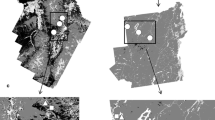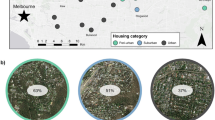Abstract
Several factors, singly or in combination, have proven relevant in promoting nestedness in animal communities (area, isolation, habitat structure, etc.); however, little empirical evidence exists about the role of human disturbance. The goal of this paper was to assess whether human disturbance (pedestrians) may affect bird species composition in such a way as to generate a nested distributional pattern. The study was conducted in an urban fragmented landscape, the city of Madrid, where wooded parks were suitable fragments for many bird species, and had different levels of human visitation. At the community level, the distribution of species was significantly nested in two consecutive breeding seasons. Using two different procedures ("temperature" and "departures" methods) to analyse causality in nestedness, I found that pedestrian rate, fragment size and the diversity of stems were significantly correlated to the nested pattern. When analysed simultaneously, and controlling for their independent effects, these factors still accounted for nestedness. Pedestrian rate was the only factor significantly associated with changes in species composition between years. At the individual species level, 74 and 41% of species were significantly nested in relation to pedestrian rate in 1997 and 1998, respectively; however, these percentages were independent of foraging substrate and body size. Besides the classic area and habitat diversity effects, human disturbance can also promote nestedness: locally, by restraining the time and space of foraging and breeding opportunities, thus reducing fragment suitability, and regionally, by increasing extinction and decreasing colonization probabilities in highly disturbed fragments.
Similar content being viewed by others
Author information
Authors and Affiliations
Corresponding author
Additional information
Electronic Publication
Rights and permissions
About this article
Cite this article
Fernández-Juricic, E. Can human disturbance promote nestedness? A case study with breeding birds in urban habitat fragments. Oecologia 131, 269–278 (2002). https://doi.org/10.1007/s00442-002-0883-y
Received:
Accepted:
Published:
Issue Date:
DOI: https://doi.org/10.1007/s00442-002-0883-y




